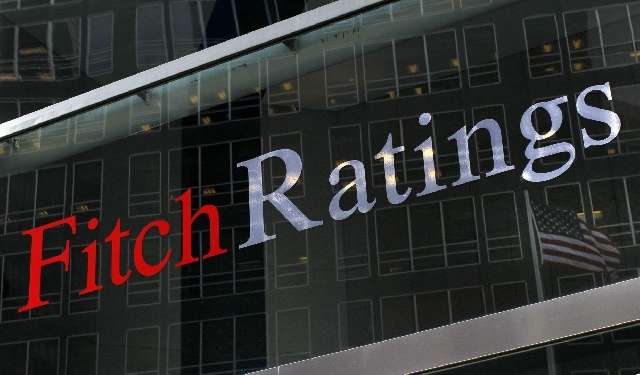FitchRatings has upgraded Ghana’s Long-Term Local-Currency Issuer Default Rating (IDR) to ‘CCC’ from ‘RD’. Fitch typically does not assign Outlooks to sovereigns with a rating of ‘CCC+’ or below.
Fitch has also affirmed Ghana’s Long-Term Foreign-Currency IDR at ‘RD’ and the Country Ceiling at ‘B-‘. Fitch has assigned ‘CCC’ ratings to two interest-only bonds issued on completion of pension funds holdings of domestic debt exchange. Fitch has also assigned ‘CCC’ ratings to four domestic US dollar-denominated bonds issued on 4 September 2023.
The upgrade of Ghana’s Long-Term Local-Currency IDR follows the completion of the domestic debt exchange programme. Fitch considers that as a result of a series of domestic debt exchanges, Ghana has normalised relations with a significant majority of local-currency creditors, with a participation rate of 92% on local-currency government bonds (with similarly participation for Cocobills and locally issued foreign-currency bonds).
Some non-participating bondholders are domestic individual bondholders, for which the authorities have publicly stated being current on the payments following a memorandum of understanding signed in May 2023.
Moreover, the local-currency debt exchanges represent a debt service reduction of GHS52 billion in 2023 (6% of estimated 2023 GDP or 39% of estimated 2023 revenue and grants). According to the IMF, debt service represented 117% of revenue in 2022. Of this total debt service reduction, we estimate the interest payment reduction in 2023 amounts to 1.8% of GDP or 12% of revenue and grants.
The domestic US dollar-denominated debt exchange adds another GHS5 billion (0.6% of GDP, 4% of revenue and grants) debt service reduction in 2023, and a further reduction is coming from the 50% principal haircut agreed with Bank of Ghana on its holdings of GHS71 billion local-currency non-marketable debt.
These debt exchanges have brought down interest payments to a still high 38% of revenue and grants in 2023, from 47% in 2022 (commitment basis, including interest payments that are due in 2023 on external debt). Fitch considers another round of local-currency debt exchange as unlikely in the near term.
Post-Restructuring Bonds at ‘CCC’
Fitch has assigned ‘CCC’ issue ratings to two interest-only bonds that were issued to pension funds and to four domestic US dollar-denominated bonds, all issued as part of the domestic debt exchanges. Fitch also affirmed the ‘CCC’ issue rating on local-currency bonds that it assigned on 22 March 2023. In August, Ghana made timely first coupon payments on these “new” bonds.
In October, the Ministry of Finance announced its plans for external debt restructuring parameters scenarios for bondholders, involving a nominal haircut of 30% to 40%, coupons of no more than 5% and maturities of up to 20 years, potentially considering value recovery instruments. According to the authorities, these parameters, together with domestic debt restructuring and planned fiscal consolidation, would enable Ghana to reach a moderate risk of debt distress in the IMF/World Bank debt sustainability assessment by 2028.
Ghana is looking to restructure USD20 billion of external debt, including official bilateral debt, export credit agencies-backed commercial loans, Eurobonds and non-insured commercial loans, under the G20 Common Framework. Financing assurances from the official creditor committee (OCC) were provided in May 2023. Under its baseline scenario, Fitch expects Ghana to reach an agreement with private creditors by mid-2024, following an agreement with the OCC.
Again, in October, the IMF and Ghana reached a staff-level agreement (SLA) on the first review of the three-year Extended Credit Facility. As one of the requirements, monetary financing of the fiscal deficit ended in May 2023. IMF board approval of the first review, which would permit a USD600 million disbursement, is pending agreement between Ghana and the OCC.
Fiscal Consolidation Under Way
As part of the IMF programme, Ghana has committed to undertake a primary fiscal adjustment (commitment basis) of 5.1pp of GDP by 2026 compared with 2022. Fitch estimates the primary fiscal adjustment to reach 3.1pp in 2023, bringing the primary deficit to 0.6% of GDP from 3.7% in 2022, driven by reductions of capital expenditure, the wage bill and other current expenditure, including transfers to the energy and financial sectors.
“We project the primary fiscal balance to improve further by about 2pp by 2025, equally split between increased revenue collection and expenditure rationalisation, thus reaching a 1.2% of GDP surplus in 2025,” Fitch stated.
Fitch, meanwhile, anticipated a decline in general government debt to 87% of GDP at end-2023, from 89% in 2022, driven by the 50% haircut on Bank of Ghana’s holdings of non-marketable debt, which represents a debt reduction of 4.2% of estimated 2023 GDP. Fitch expects this will be partly offset by 33% year-on-year cedi depreciation compared with end-2022 and the primary deficit.
Assuming a 30% haircut on external debt considered for the restructuring, year-on-year cedi depreciation of 20% in 2024 and 9% in 2025 and a GDP deflator of 21% and 10% respectively, public debt would fall to 78% by 2025, although there is a high degree of uncertainty surrounding the definitive external debt restructuring parameters.
Non-payment of interest on selected external debt pending a restructuring and a marked reduction in merchandise imports will contribute to an expected current account surplus of 1.1% of GDP in 2023 compared with a 2.1% deficit in 2022. “We forecast the current account to remain in surplus in 2024 and 2025, at 1.2% of GDP and 1.8%, respectively, although this forecast is subject to developments in the external debt restructuring,” it indicated.
Current account surpluses and projected disbursements from international financial institutions will increase Bank of Ghana’s foreign reserves by an estimated USD1.1 billion per year in 2023-2025, after a USD4.4 billion fall in 2022, reaching USD7.7 billion (about three months of current external payments) in 2025, from 1.6 months in 2022.
READ ALSO: Prudential Bank Builds Capacity of Clients on Digital Offerings





















